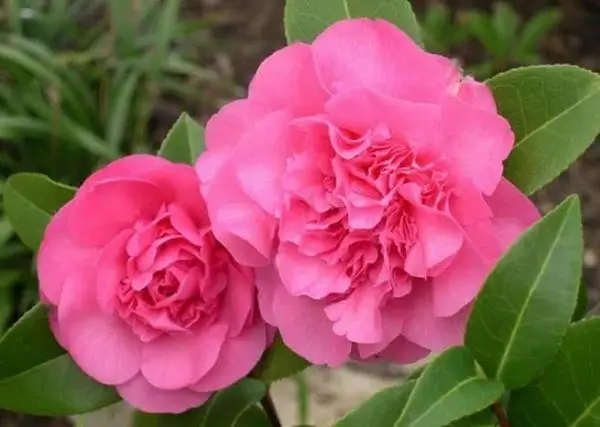Camellias are small trees and shrubs that belong to the genus Camellia , which require certain care in order to survive without problems. They are also very versatile to decorate the home, since there are species with varieties perfectly adapted to live indoors, such as Cemllia japonica .
If you like the large and colorful flowers of these plants to have at home, whether indoors or outdoors, keep reading this article in which we offer you a practical gardening guide on how to care for camellias.
Characteristics of camellias
The camellia plants are a genre called Camellia and these are its main features:
- This genus includes about 250 species and they are native to tropical and subtropical zones spread between Japan, China, and more regions of Southeast Asia.
- It is a genus that includes small trees and flowering shrubs that are evergreen and can grow up to 10 m in height.
- Its leaves are leathery, dark green, pointed, and with whole or somewhat serrated edges.
- The flowers of these plants are highly appreciated in gardening and for decoration. They are large flowers with an average of 5 petals and various colors, such as white, pink, and red.
- Sometimes, the same plant can have some flowers of different colors or these can be of the aforementioned colors but mixed or mottled.
Some of the best known camellia species are:
- Camellia japonica (the Adolphe Audusson variety is the most used to have indoors).
- Camellia reticulata.
- Camellia sinensis (it is the well-known plant from which tea is obtained).
- Camellia sasanqua.

Camellias: basic care
Take note of the following tips on how you care for camellias :
- Climate: they need to develop in a climate that is humid and mild during the summer and cold during the winter, thus they adapt perfectly to the cold climate of the north as well as the heat of the south. However, avoid exposing them to extreme climates where the excessive sun can burn them or strong frosts can freeze them.
- Soil: Camellias need a plant-soil that is somewhat acidic, so when buying it make sure it is one with the right pH.
- Fertilizer: they need a fertilizer that is rich in phosphorus, iron, potassium, and magnesium, mainly in the growing season.
- Irrigation: try not to water them with hard water that has excess lime, as they feel quite bad. If you lose the buds before they open, it is quite likely due to an excess of water in the irrigation, so make sure you water it correctly.
- Type of water: it is best to water them with mineral or rainwater, but never with tap water. If there is no other remedy, mix it with a little vinegar to mitigate the effect of the lime.
- Flowering months: during the three months of flowering they should receive little water so that their peduncles can form strong and support the weight of the bud without breaking.
If you take care of them correctly, they will become a beautiful shrub that, in addition to being beautiful, will be very striking. Their care is not very complicated and when you see them flourish in all their splendor, you will see it will have been worth the dedication. As a recommendation, it would be ideal if you could plant several, since that way you would have a beautiful space that would give a lot of life to your garden or terrace.

More Camellia Care – Possible Problems and Solutions
To complete your knowledge about the care of camellias , we offer you some tips on some of the possible problems that this plant can suffer:
- Camellia loses its buds: if a camellia plant loses its flowers before opening them, it means that we are watering it too much, that it does not have good drainage, or that the temperature of its environment has changed abruptly. To remedy this, make sure that it has good drainage, that the soil is not flooded and if so, change a part of it and place it in an area with a more suitable climate.
- Yellow leaves on camellias: this is a sign that the substrate is not the most suitable and is not sufficiently acidic for this plant. It can also happen that you are giving it too strong and direct sun, although in this case, the leaves will end up being brown, dry, and fall. Make sure the location is suitable and that you put more acidic soil on it.
- Leaves with white spots: if silver or white spots appear, it is most likely that some type of fungus has appeared on this plant due to high humidity in its environment or even in the land itself due to excessive watering. In this case, you can remove the most damaged leaves and use homemade fungicides like the ones we show you here. Also, you can use them from time to time as prevention.
